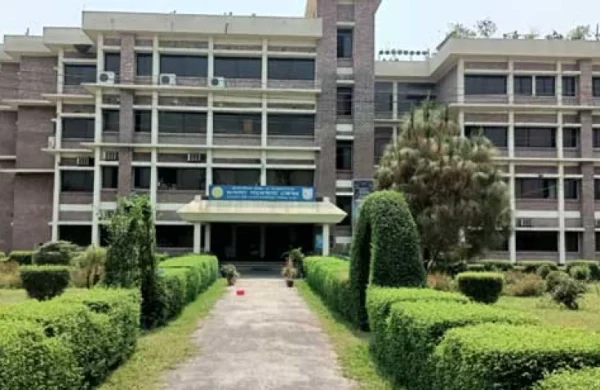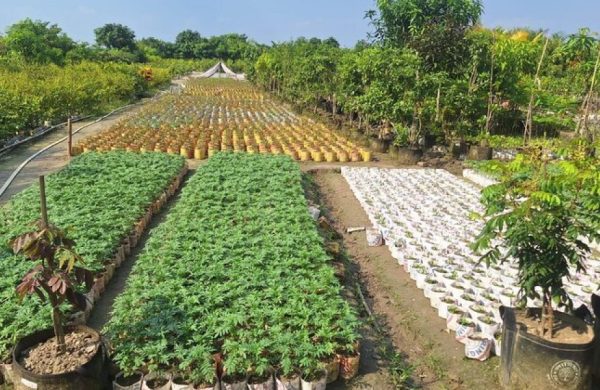Spices Research Centre’s innovations trapped in the lab
- Update Time : Saturday, November 15, 2025

Bogura Correspondent:
For three decades, the Spices Research Centre of the Bangladesh Agricultural Research Institute in Bogura has positioned itself as the engine of Bangladesh’s spice innovation.
Its official records boast 58 newly developed varieties across 27 spice species, along with 66 modern technologies designed to boost production, improve seed quality and help farmers adapt to climate change.
Yet in the fields of Bogura, Pabna or Meherpur – the very landscapes meant to reap these benefits – farmers are unaware that most of these innovations even exist.
Interviews, field visits and official admissions reveal a stark reality: despite enormous public investment and glowing claims, the centre’s work has little to no measurable impact on Bangladesh’s spice cultivation.
A COUNTRY THAT PRODUCES PLENTY YET IMPORTS EVEN MORE
Bangladesh currently cultivates spices across 4.29 lakh hectares, producing roughly 35.93 lakh tonnes – around nine per cent of the global total. Yet the domestic market paints a paradox.
National demand stands at 58.5 lakh tonnes
Bangladesh imports 44.96 lakh tonnes annually
Even after imports, there remains a deficit of 13.54 lakh tonnes
Annual import cost: Tk 8,000-9,000 crore
In other words, Bangladesh spends billions importing crops that its own research institutions claim to have revolutionised.
THE “INNOVATION GAP”: VARIETIES ON PAPER, EMPTINESS IN THE FIELD
Although the centre has been operational under BARI since 1994, its innovations rarely travel beyond its laboratory walls. Most farmers interviewed for this report said they continue to plant old, traditional varieties, some dating back two to three decades.
Two ginger farmers in Sherpur, Bogura, put it bluntly: “We have never been given any government seed. We do not know the names of these research varieties. We save our own seeds or buy from the market.”
The Department of Agricultural Extension (DAE) echoes this disconnect. One official admitted: “The research centre does not send us the new varieties. Without seed or guidance, we cannot train farmers or conduct field demonstrations.”
Meanwhile, the Bangladesh Agricultural Development Corporation (BADC) – responsible for multiplying and distributing seeds nationwide – has not purchased a single seed batch from the centre for the past two years.
BADC’s acting Deputy Director, Kamal Kanti Barman, said spice-related activities have been “slow” and that in 2024 they were not contacted by the research centre at all.
RESEARCH WITHOUT IMPLEMENTATION
Documents show the centre regularly prepares proposals for developing two to three new varieties each year. However, there is no structured extension plan, no compulsory field testing, and no monitoring framework to ensure that the innovations actually reach growers.
Even the centre’s Chief Scientific Officer, Dr Ashiqul Islam, who insists that their varieties are being cultivated in districts such as Pabna, Faridpur, Meherpur and Cumilla, admits that the centre has no outreach budget.
“We do not have funds for extension activities,” he said. “We do not have our own demonstration plot either.”
The result is predictable: unless farmers stumble upon these innovations by chance, they remain confined to research papers and technical reports.
MILLIONS SPENT ON RESEARCH THAT LEADS NOWHERE
Despite repeated requests, centre officials declined to disclose the annual budget. According to previous government documents, research centres under BARI typically receive Tk 2-3 crore annually. Sources confirm that the Spices Research Centre’s budget stands at Tk 1.5-2 crore.
Yet some of this money has been spent for years on researching crops such as white and black cardamom, even though its own scientists acknowledge that Bangladesh’s soil is unsuitable for these crops.
When asked why research funding was being channelled into crops known to be unviable, officials had no clear answer.
SERVICES THAT EXIST ONLY IN MANUALS
The centre’s official duties include:
supplying breeder seeds to BADC and DAE
training farmers
holding field demonstrations and workshops
distributing leaflets and manuals
offering advisory support through visits and phone consultations
supporting farmers in disaster-affected areas
On paper, it is an extensive and ambitious programme. In practice, however, virtually none of these activities are occurring at scale.
In fact, 95 per cent of the farmers interviewed said they had never encountered an officer from the Spices Research Centre. Local DAE officials confirmed that for more than a decade, there have been:
no mass training programmes
no field days
no demonstration plots
no coordinated expansion projects
FARMERS STILL TRAPPED WITH OUTDATED VARIETIES
Every year, the prices of onions, garlic and ginger surge dramatically – especially around Eid-ul-Azha. Farmers insist that if improved varieties were genuinely distributed, production would rise, supply pressures would ease and they would finally benefit financially.
But the seeds never arrive.
“If the centre’s innovations were reaching the field, we would see a reduction in market volatility,” said one agricultural economist in Bogura.
“Instead, the country pays thousands of crores importing crops we should be able to grow efficiently.”
EXPERTS CALL FOR ACCOUNTABILITY
KGM Faruk, Bogura Secretary of the Campaign for Good Governance (SUPRO), was sharply critical:
“These varieties are created in laboratories but do not reach farmers’ fields. There is no expansion plan, no monitoring and no allocated budget for dissemination. As a result, research costing crores of taka exists only in reports and presentations. Questions naturally arise about the accountability and relevance of such institutions.”
A NATIONAL OPPORTUNITY GOING TO WASTE
Bangladesh has the climate, labour force and demand needed to build a thriving domestic spice sector. Yet without coordination between researchers, agricultural extension officers and seed distribution agencies, innovations will continue to stagnate.
Unless the system is reformed, the Bogura Spices Research Centre risks becoming exactly what many farmers already suspect it is:
A research institution producing impressive results on paper – and little else beyond it.















